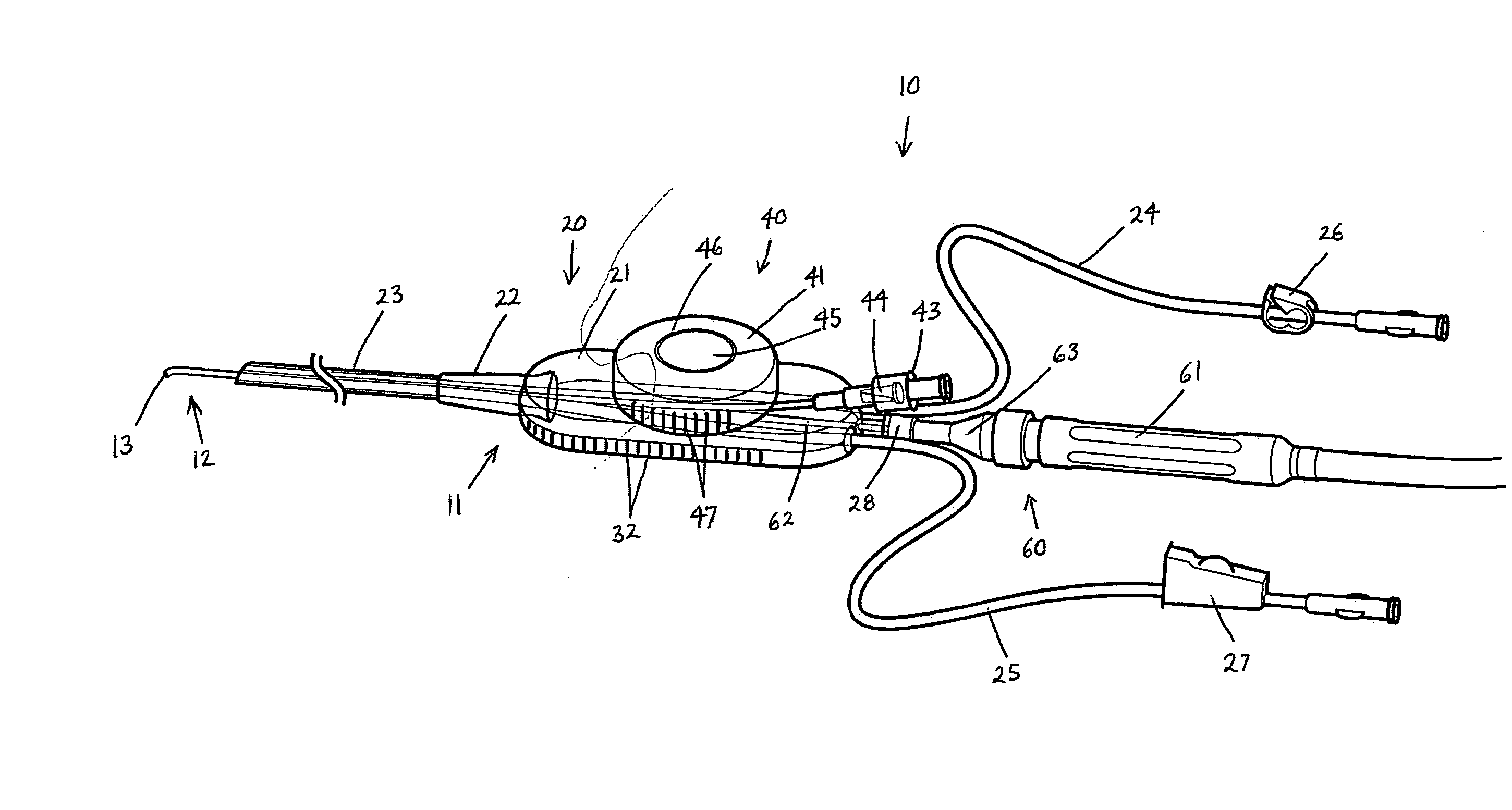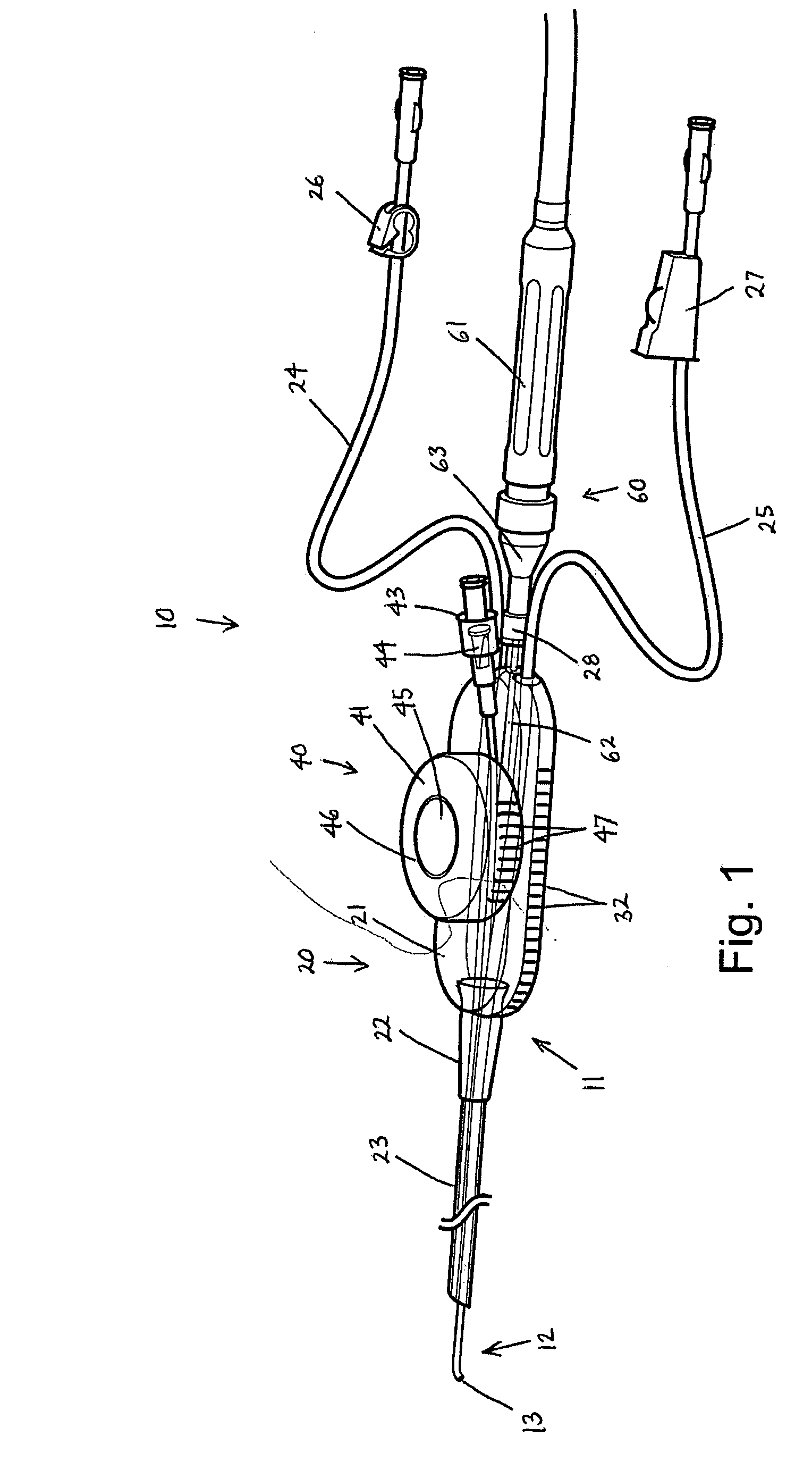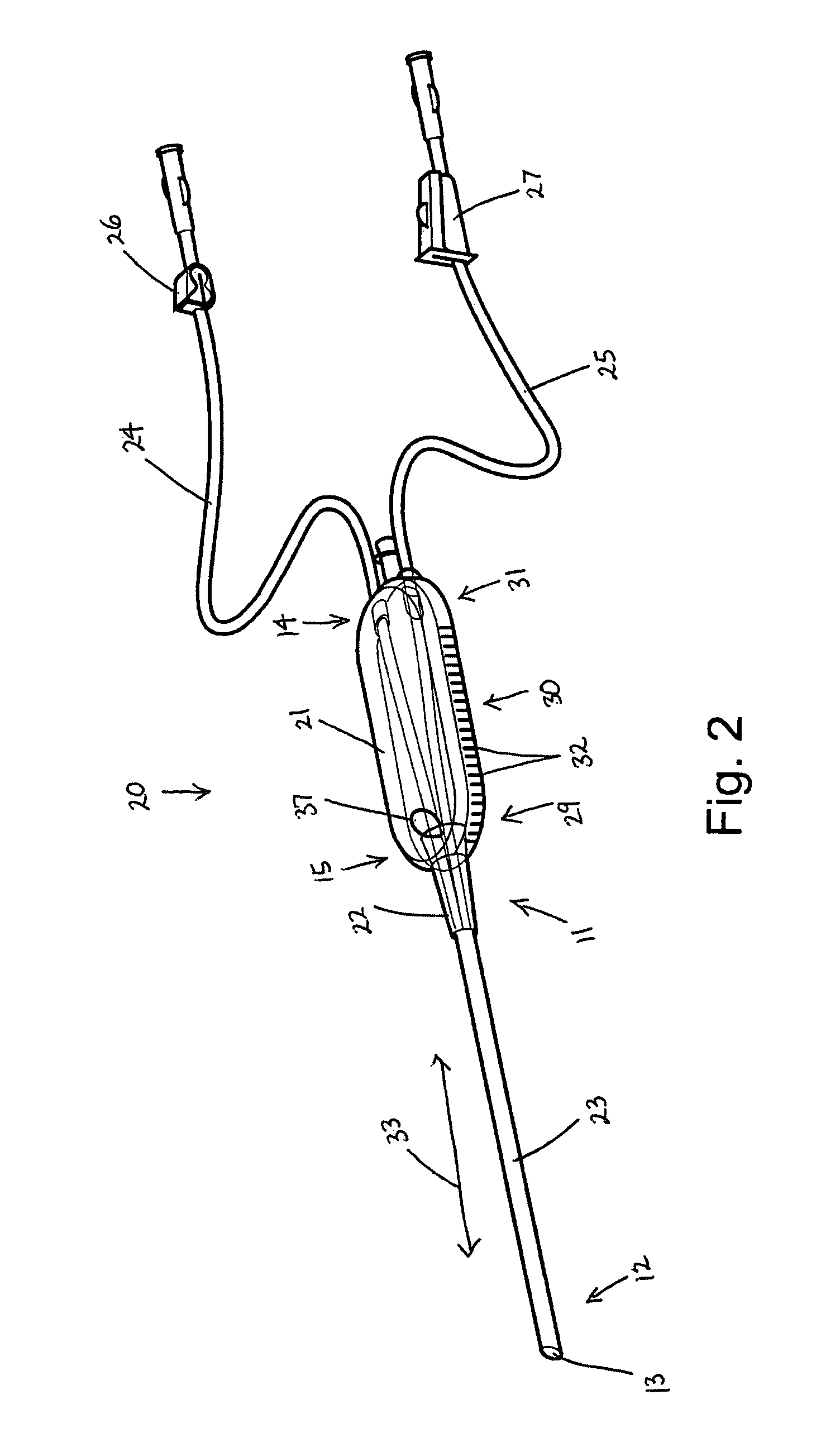Medical device introduction systems and methods
a technology for medical devices and introduction systems, applied in the field of medical device introduction systems and methods, can solve the problems of limiting the ability of physicians to perform as well as capable, limiting the ability of physicians to view a target site, limiting the ability of construction of medical devices, and limiting the ability of physicians to perform additional procedures. to achieve the effect of improving steering
- Summary
- Abstract
- Description
- Claims
- Application Information
AI Technical Summary
Benefits of technology
Problems solved by technology
Method used
Image
Examples
Embodiment Construction
[0037] Some embodiments of the present invention can provide a medical device introduction system and / or method. FIGS. 1-18 show various aspects of such embodiments. For example, an illustrative embodiment of a medical device introduction system and / or method can include a medical introducer, a separate imaging device, and / or a separate working channel device. In such an embodiment, each of the medical introducer, the imaging device, and the working channel device can be movable independent of the other.
[0038] Minimally invasive surgical procedures have been developed that can be used in many diagnostic and / or therapeutic medical procedures. Such minimally invasive procedures can reduce pain, post-operative recovery time, and the destruction of healthy tissue. In minimally invasive surgery, the site of pathology can be accessed through portals rather than through a significant incision, thus preserving the integrity of intervening tissues. These minimally invasive techniques also o...
PUM
 Login to View More
Login to View More Abstract
Description
Claims
Application Information
 Login to View More
Login to View More - R&D
- Intellectual Property
- Life Sciences
- Materials
- Tech Scout
- Unparalleled Data Quality
- Higher Quality Content
- 60% Fewer Hallucinations
Browse by: Latest US Patents, China's latest patents, Technical Efficacy Thesaurus, Application Domain, Technology Topic, Popular Technical Reports.
© 2025 PatSnap. All rights reserved.Legal|Privacy policy|Modern Slavery Act Transparency Statement|Sitemap|About US| Contact US: help@patsnap.com



